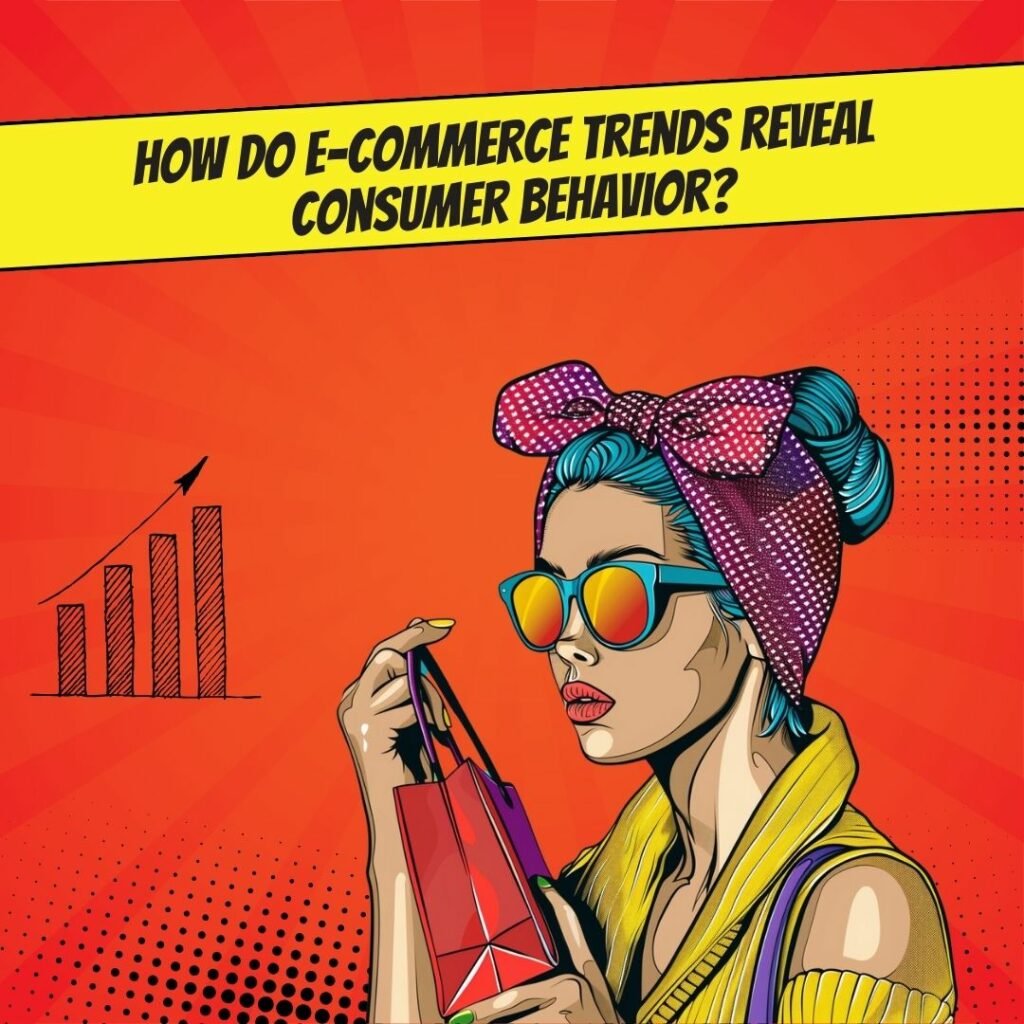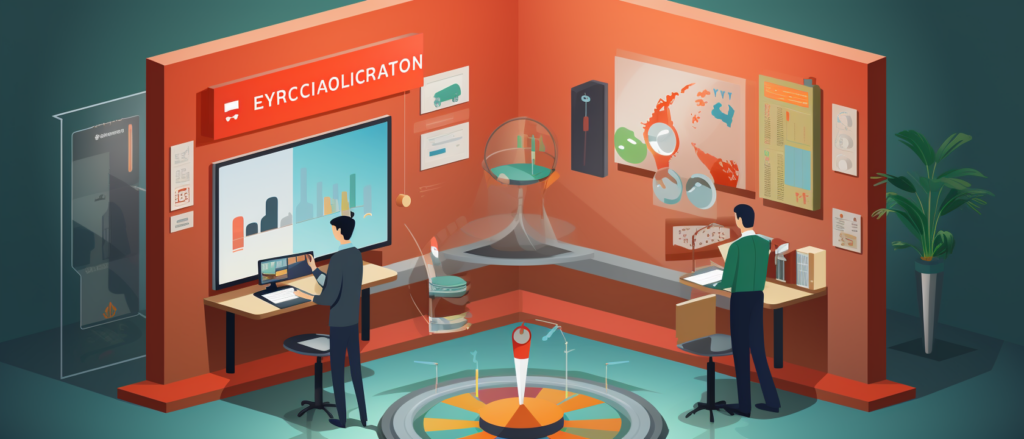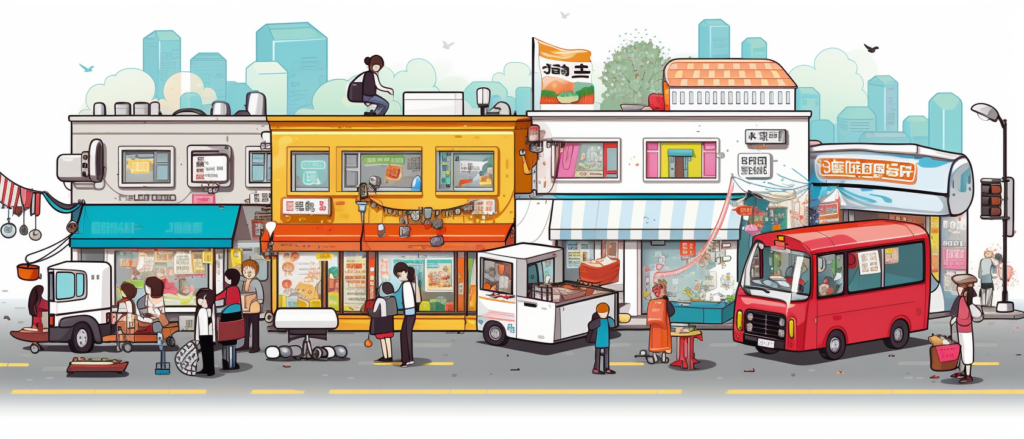Key Takeaways
✅ Convenience and Personalization Are Key: The ease of shopping from anywhere at any time combined with a tailored experience is what today's shoppers crave. Statistically speaking, personalization can lead to a sales uplift of up to 15%. Retailers can see big returns by investing in mobile optimization, seamless omnichannel platforms, and AI for personalized recommendations.
✅ Sustainability and Authenticity Matter: Today's consumers are informed and value-driven, reflected in their willingness to spend 66% more on sustainable goods. Businesses that incorporate genuine sustainable practices into their model can expect to build stronger relationships with their customer base.
✅ Social Media and Technology Drive Shopping Behavior: Nearly 54% of Gen Z and 49% of Millennials say social media influences their purchase decisions. Retailers can harness technologies like augmented reality (AR) and social media integrations to enhance the customer journey and meet shoppers where they are.

Introduction
Have you ever wondered what really goes on in the minds of shoppers as they navigate through countless e-commerce platforms? Understanding consumer behavior through e-commerce trends and online shopping is more than just a passing interest—it's a crucial strategy that can make or break an online business. In a world where digital shelves are becoming as common as the physical ones, grasping these elements can be your key to unlocking success.
Retailers who tap into the ever-evolving expectations of digital consumers can transform their brands to meet these new standards of commerce. This article presents groundbreaking e-commerce trends and innovative strategies for brands to maximize their ROI, offering insight into how companies like yours can adapt to the digital landscape. Get ready to uncover actionable insights that will keep your customer's scrolling, clicking, and, most importantly—buying.
Top Statistics
| Statistic | Insight |
|---|---|
| Mobile Shopping: 41.8% of all retail ecommerce sales worldwide came from mobile devices in 2022. | The hefty portion of sales via smartphones highlights the undeniable shift towards the convenient use of mobile for shopping and emphasizes the need for businesses to optimize for mobile experiences. |
| Personalization: 49% of customers bought a product they did not intend to buy because they received a personalized recommendation. | This demonstrates the powerful influence of personalization in ecommerce, where tailored suggestions can lead to spontaneous purchases, enhancing sales. |
| Cart Abandonment: 26% of shoppers abandon their carts due to complicated checkout processes. | A statistic that screams the value of a straightforward, hassle-free checkout experience to reduce lost sales and increase conversion rates. |
| Live Chat: 67% of online shoppers prefer using live chat for support over other communication channels. | This preference indicates a demand for real-time, seamless customer service interactions, potentially leading to higher satisfaction and repeat customers. |
| Ecommerce Growth: 67% of consumers report increased online shopping since the COVID-19 pandemic. | The pandemic has acted as an accelerator for ecommerce, hinting that the uptick in online purchasing may become a permanent habit for a significant consumer base. |
Rising Influence of Gen Z on E-commerce
Generation Z is rapidly becoming a dominant force in the e-commerce landscape. A deep dive into their shopping tendencies uncovers a distinct preference for mobile-first shopping. A shining example is the fashion brand ASOS, which has tapped into this zeitgeist with their slick and accessible mobile app. These digital natives are ushering in an era where brands are expected to have a strong mobile presence that caters to a generation constantly on-the-go. But it's not all about being mobile-friendly; how are companies aligning their mobile strategies to the unique habits of this group?
Craving Authentic Connections
One cannot ignore Gen Z's appetite for authenticity and transparency in their interactions with brands. Companies like Glossier, the beauty brand, have hit the mark by fostering genuine connections with consumers who crave real brand experiences. The question then arises: What steps are other brands taking to embody this level of honesty, and does it translate to an uptick in customer loyalty?
Social Commerce and The Influencer Effect
Social commerce has turned platforms like Instagram and TikTok into goldmines for brands targeting Gen Z. With social media being a pivotal part of their day-to-day, Fashion Nova, among others, effectively utilizes influencers and user-generated content to drive sales. Yet, how critical is influencer marketing for a brand's success in the eyes of a generation that is bombarded with content?
Sustainable Choices Matter
Gen Z's concern for sustainable and ethical practices is profound. They are not just talking about change; they're making purchase decisions that align with their values. Patagonia's unwavering commitment to environmental responsibility has not only reduced its ecological footprint but has also earned the brand a loyal following among this conscious demographic. The essential question for marketers is: How are sustainability and ethical conduct interpreted through the lens of consumer buying behavior, and can this be a competitive differentiator?
High Expectations for Personalized Shopping
Companies like Stitch Fix respond to Gen Z's demand for personalized shopping experiences by harmonizing advanced algorithms with the human touch of stylists. This revolutionary approach begs us to consider the depth of personalization possible by leveraging technology. How does this shape consumer expectations, and what are the implications for e-commerce businesses not yet on the personalization bandwagon?
The Need for Speed: Instant Gratification
A cornerstone of Gen Z’s shopping preferences is their desire for instant gratification. The expectation for swift, hassle-free transactions is driving e-commerce brands to up their game. But exactly how much does speed influence loyalty and customer satisfaction? And are we seeing a seismic shift in operational efficiencies driven by this demand?
Navigating the New Retail Reality Post-COVID-19
The COVID-19 pandemic has been a catalyst for change, inciting an acceleration in e-commerce adoption and setting new benchmarks for convenience and omnichannel access. As we examine this transformation, what are the emerging challenges and opportunities businesses face in this evolving digital marketplace, and how have consumer habits been reshaped by the pandemic experience?
Deciphering Consumer Behavior to Drive Growth
Understanding the intricacies of consumer shopping behavior is not just about keeping up with trends; it's a strategy for growth. Developing a keen sense of these dynamics is crucial for e-commerce companies aiming to broaden their customer base and reinforce customer retention. So, what are the actionable insights that can be drawn from a meticulous study of behavioral patterns, and how can they boost a brand’s revenue?
Cutting-edge Tech and Shopper Habits
The advent of technologies, notably Artificial Intelligence (AI), is redefining the e-commerce experience. AI-driven platforms facilitate seamless product discovery and enhance the overall convenience for tech-savvy shoppers. How does this new technological ecosystem influence consumer expectations, and what implications does it hold for the customer journey?
The Era of 'Always-On' Shopping
Social media is not just about connectivity; it's increasingly about commerce. With the lines between browsing and shopping blurring, consumers find themselves in a perpetual state of shopping readiness. In light of this, businesses face the daunting task of aligning their offerings with an ‘always-on’ shopping experience. How do they maintain relevance in a market where the consumer is continuously tempted by an outpouring of choices?
The Impact of Emotions and Peer Influence
The psychology of consumer behavior holds keys to why and how decisions are made. Emotional narratives, peer pressure, and cognitive biases consistently thread through consumer actions. Markedly, addressing these psychological factors has become a linchpin for brands aiming to resonate with their audience. But what are the intricacies of such psychological tactics, and how do they transform potential leads into dedicated customers?
In the ever-changing tapestry of e-commerce, these topics probe deep into what makes the modern consumer click, both figuratively and literally. The brands that not only understand but adapt to these shifts are the ones set to succeed. As this landscape continues to evolve, insightful analysis—a mixture of scientific data, psychological understanding, and a keen eye for emerging patterns—remains the best tool for brands to not just survive but thrive.
AI Marketing Engineers Recommendation
Recommendation 1: Utilize Advanced Customer Segmentation Practices: Leverage the latest data analysis techniques to dig into your demographics. Who's buying what and when? For example, you might find through tracking cookies and purchase history that 30- to 45-year-olds are primarily purchasing kitchen gadgets on weekday evenings. Use this level of detail to create nuanced marketing campaigns that target specific age groups at the most effective times.
Recommendation 2: Tap into Personalization Algorithms: With 80% of shoppers more likely to buy from a brand that provides a personalized experience, integrating AI personalization algorithms has never been more crucial. These algorithms analyze consumer browsing patterns and purchase history, enabling you to offer personalized product recommendations. Introducing these features on your e-commerce site can enhance consumer engagement and increase sales.
Recommendation 3: Invest in Predictive Analytics Tools: Predictive analytics are reshaping how we understand consumer behavior online. Employ tools like Google Analytics, IBM Watson, or Salesforce Einstein Analytics to anticipate future consumer purchases and trends. By using these analytics tools, you can forecast demand for certain products and adjust your inventory and marketing efforts accordingly, ensuring that you're always one step ahead of consumer needs.
Relevant Links
- Mastering WeChat: Your Gateway to Digital Success in China
- Leveraging China's Short-Video Craze for Brand Success
- SEO Secrets for Conquering South Korea's Online Marketplace
- AI in Korean E-Commerce: Personalization at Its Finest
- Going Green: How Sustainability is Revolutionizing Korean Online Shopping
Conclusion
Navigating the digital landscape of online shopping is no small feat for businesses today. With the rise of a savvy, always-connected Generation Z, the rules of the game have indeed shifted. It's clear that understanding consumer behavior is not just important, it's essential for success. Brands like ASOS, Glossier, and Patagonia are already leading the way, showing us that mobile-first strategies, authentic communication, and sustainable practices resonate deeply with today's consumers.
But it's about more than just catching up—it's about staying ahead. Advancements in technology, especially those in AI, beckon a new chapter where personalized experiences and virtual convenience are the norms, not the exceptions. And let's not forget the power of emotion and psychology; these elements continue to thread through every click and every purchase decision.
So, where do businesses go from here? It's a pivotal moment to leverage these insights, to evolve, and to innovate. The question remains: Are you ready to meet the ever-changing demands of the digital consumer head-on, to adapt, and most importantly, to grow? As online shopping trends continue to evolve, the brands that truly listen to and understand their customers are the ones that will not just survive, but thrive in this dynamic e-commerce era.
FAQs
Question 1: What is customer behavior analysis?
Answer: Customer behavior analysis is the study and understanding of how customers interact with brands, products, or services. It looks at customer actions, preferences, demographics, and more to spot patterns and trends. These insights help businesses tailor their marketing, improve customer experience, and drive sales.
Question 2: What are the 4 types of customer behavior?
Answer: There are four main types of customer behavior:
- Transactional behavior: Customers focus on price, convenience, or availability when making purchases.
- Relational behavior: Customers value personalized experiences and building relationships with brands.
- Loyal behavior: Customers keep coming back to a brand because they're happy with previous experiences.
- Advocacy behavior: Customers talk up a brand to others because of exceptional experiences.
Question 3: What is online consumer behavior?
Answer: Online consumer behavior is about understanding how consumers decide to buy products online. It involves knowing what drives online shopping, such as product availability, clear delivery times, and convenience.
Question 4: How has the COVID-19 pandemic impacted consumer behavior?
Answer: The pandemic has pushed more people to shop online, highlighting the need for convenience. Customers are now focusing more on health, safety, and digital experiences, with a new emphasis on sustainability and authenticity. Businesses need to adapt to these changes.
Question 5: What role does social media play in shaping consumer behavior?
Answer: Social media is crucial in shaping consumer preferences and purchasing habits. It's where brands promote themselves, where people discover products, and influencers market to their followers, mixing personal recommendations with paid ads.
Question 6: How does data-driven marketing influence consumer behavior?
Answer: Data-driven marketing helps companies make personalized marketing plans, predict buying patterns, and improve user experiences. This personalized touch can increase customer engagement and loyalty.
Question 7: How can businesses adapt to changing consumer behavior?
Answer: To keep up with shifting consumer behavior, businesses need to be flexible, attentive, and ready to change. They should provide convenience, transparency, and personalized experiences and blend sustainability and authenticity into their business models.
Question 8: What are the key trends in e-commerce consumer behavior?
Answer: Significant e-commerce trends include a focus on convenience, the growth of shopping across multiple channels, the demand for sustainable options, and the use of technology like AI and AR to improve shopping experiences.
Question 9: How can businesses effectively use customer behavior analysis?
Answer: Companies should use customer behavior analysis to find patterns and trends, customize their marketing strategies, enhance customer experiences, and boost sales. Staying current with consumer trends and adjusting strategies is key.
Question 10: What are the key characteristics of Gen Z consumer behavior in e-commerce?
Answer: Gen Z shoppers prioritize mobile shopping, authenticity, sustainability, and personalized experiences. They're heavily influenced by social media and expect smooth, user-friendly shopping experiences.
Question 11: How can businesses effectively target Gen Z consumers?
Answer: To reach Gen Z, companies should focus on mobile-based strategies, be authentic and transparent, use social commerce, endorse sustainable products, and offer personalized shopping experiences.













